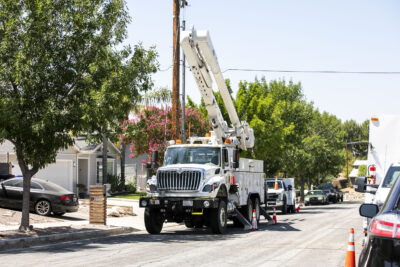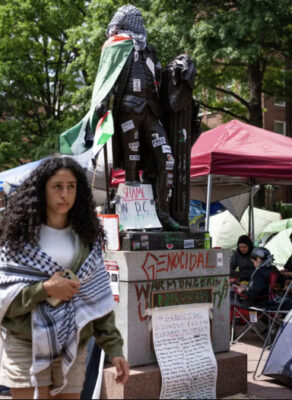For over 50 years, Chiquita Canyon Landfill has been a cornerstone of Santa Clarita Valley’s infrastructure, responsibly managing the region’s residential and commercial waste since 1972 until it closed on Dec. 31, 2024.
As many of you know Chiquita is currently responding to an elevated temperature landfill (ETLF) event – a chemical reaction that rarely occurs in landfills – located in an older, closed part of the landfill. In fact, there have only been 10 to 15 reactions of this size in United States history. Rather than shy away from this challenge, the landfill’s team responded with unprecedented speed and determination. Chiquita hired experts and has deployed massive engineering and scientific resources in an effort to minimize the ETLF event and any impacts.
Local, state and federal agencies established a coordinated response through the Multi-Agency Critical Action Team, which includes the U.S. Environmental Protection Agency, California Environmental Protection Agency and its boards and departments including the Department of Toxic Substances Control, Los Angeles County Department of Public Health, and other relevant authorities. Every step of the mitigation process has been conducted under the strictest environmental standards and in close coordination with these regulators, ensuring that public safety remains a top priority.
Understandably, community members have questions about health and safety. To provide clear, science-based answers, both Chiquita and Los Angeles County commissioned independent toxicologists to evaluate air quality in the communities around the landfill and assess potential health risks. The studies prepared by these experts did not find that there were any expected short- or long-term health impacts attributable to emissions from the landfill based on available data. These findings are the product of rigorous, scientific investigations by independent experts and Chiquita’s regulators.
Unfortunately, the landfill has become a target for political games. Some local politicians have chosen rhetoric over facts, spreading unfounded fears and undermining the hard work of scientists, regulators and landfill staff.
This misinformation distracts from real progress and impedes ongoing mitigation efforts. Chiquita has consistently engaged in factual, open dialogue at frequent public hearings and community events. Unfortunately, Chiquita’s transparency has been met with aggressive, damaging, and often false rhetoric, which has created confusion and fueled uncertainty. The community deserves better.
The most recent examples include claims that the ETLF event has expanded significantly. These assertions are based on only partial data, a technique inconsistent with how ETLF experts evaluate these types of reactions. We will continue to evaluate, but our data and monitoring show that Chiquita’s efforts are having a positive effect. We remain committed to implementing the mitigation measures ordered by our regulators and recommended by our technical experts.
Another example is claims of a “cancer cluster.” The county requested a cancer risk evaluation by the USC Cancer Surveillance Program, which was unable to validate any allegations of a “cancer cluster” in the communities surrounding the landfill as a result of the ETLF event or otherwise. However, elected officials, community members and select media reporting continue to make declarative statements about a cancer cluster, which is in direct contradiction to the conclusions drawn in that independent scientific report.
Plaintiffs suing the landfill falsely allege this is the “worst ongoing chemical disaster in U.S. history.” This is an outrageous claim, and unfortunately select organizations are falsely stating that the EPA also believes this. The EPA and other regulators have never made such a statement, and it is insulting to Chiquita and the hardworking regulators who have been collaborating for multiple years to address this reaction.
Chiquita has collaboratively worked with all of its regulators to implement measures designed and approved by experts and government officials to control the ongoing issues at the landfill. And objective data show these measures are working.
Chiquita’s commitment to its neighbors goes beyond regulatory compliance. In March 2024, Chiquita launched the Chiquita Canyon Landfill Community Relief Program to help offset costs associated with odor mitigation for nearby residents. This program has distributed more than 1,700 air filters and provided approximately $23.5 million in direct relief to households, assisting with temporary relocation, home improvements, and utility bills. Chiquita decided to end the program in February 2025 when long-term trends in onsite and offsite air quality data both showed improvements in air quality and potential impacts from the landfill. Chiquita Canyon Landfill remains steadfast in its mission to reduce the reaction and deliver results for our neighbors. We provide regular updates, open communication, and work with local residents and regulatory agencies. These are the concrete practices that guide every decision made at the landfill.
This complicated reaction poses challenges and our work is not done. We will continue to act responsibly and transparently throughout our work at Chiquita Canyon Landfill, leading with science instead of rhetoric.
The facts are clear: Chiquita Canyon Landfill is addressing the reaction head-on and doing so with scientific rigor, in close partnership with regulators and a deep respect for the community we serve and live in.
Steve Cassulo is the district manager of the Chiquita Canyon Landfill.











